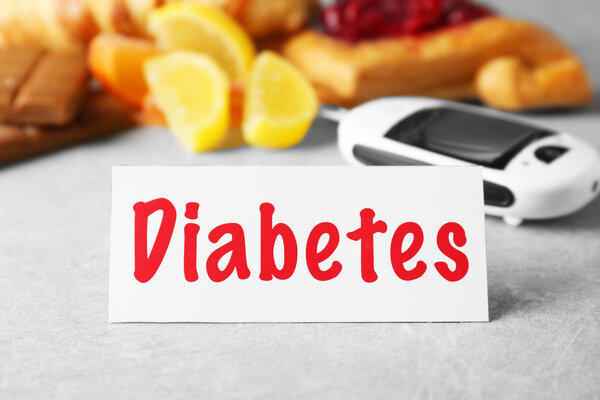Sure! Here’s the first part of the article. I’ll provide the second part in the follow-up response.
Introduction: More Than Just “Three Many, One Less”
When we talk about diabetes, the phrase “three many, one less” often comes to mind. This refers to the common symptoms of diabetes: frequent urination (polyuria), increased thirst (polydipsia), increased hunger (polyphagia), and weight loss. These are undoubtedly critical indicators that one might be developing diabetes, but they are not the only signs you should be aware of. Diabetes is a complex metabolic disorder, and its symptoms can manifest in various ways that are easy to overlook. By recognizing these lesser-known symptoms early on, you can take proactive steps toward managing the disease and preventing complications.
While many people are familiar with the “three many, one less” symptoms, fewer realize that diabetes can affect nearly every part of the body. Whether it’s your vision, skin, or even your mood, diabetes has a way of impacting your health in subtle but significant ways. In this article, we will explore these less commonly discussed symptoms of diabetes, equipping you with the knowledge needed to spot early warning signs and seek proper treatment.
The Impact of Diabetes on Your Skin
Your skin is often the first to show signs of changes in your body. With diabetes, skin problems are not uncommon, and they can occur for a variety of reasons. High blood sugar levels can lead to dry, itchy skin, making it more prone to infections and cuts. Furthermore, people with diabetes are at a higher risk of developing certain skin conditions, including:
Diabetic Dermopathy: This condition presents as light brown or reddish spots on the skin, often appearing on the shins. These spots are not dangerous but can be a sign of long-term elevated blood sugar levels.
Acanthosis Nigricans: This condition causes dark, velvety patches of skin to form, typically in body folds such as the neck, armpits, or groin. It is often associated with insulin resistance.
Fungal Infections: High blood sugar provides an ideal environment for fungi to thrive. As a result, people with diabetes are more likely to experience fungal infections, such as athlete’s foot, yeast infections, and ringworm.
If you notice any of these skin issues, it could be a sign that your blood sugar levels are not properly controlled. It’s important to consult with your healthcare provider to manage both your skin health and diabetes.
Vision Problems: A Hidden Warning
One of the most concerning complications of diabetes is its effect on vision. High blood sugar levels can damage the blood vessels in the eyes, leading to conditions such as:
Diabetic Retinopathy: This is a condition where the blood vessels in the retina become damaged, potentially leading to vision loss. Early stages of diabetic retinopathy may not cause noticeable symptoms, but over time, it can lead to blurry vision, floaters, and even blindness if left untreated.
Cataracts: People with diabetes are at an increased risk of developing cataracts, a condition where the lens of the eye becomes cloudy, leading to impaired vision. Individuals with diabetes often develop cataracts at a younger age than those without the disease.
Glaucoma: High blood sugar can also lead to an increased risk of glaucoma, a condition that damages the optic nerve and can result in permanent vision loss.
If you start to experience blurred vision, sudden vision changes, or difficulty seeing at night, it’s essential to schedule an eye exam with an optometrist. Early detection and management of diabetic eye disease can help prevent severe vision impairment.
Numbness and Tingling in Extremities: Diabetic Neuropathy
Diabetes can lead to nerve damage, a condition known as diabetic neuropathy. This occurs when high blood sugar levels damage the nerves, particularly in the hands, feet, and legs. The damage to the nerves can cause:
Numbness or tingling sensations in the feet, hands, and legs
Pain or a burning sensation in the extremities
Weakness in the muscles of the feet or hands
Over time, diabetic neuropathy can make it difficult for individuals to feel injuries, cuts, or infections in their feet, increasing the risk of infections that may go unnoticed. It’s important to regularly check your feet for cuts or sores and report any unusual sensations to your doctor.
Fatigue and Weakness: A Sign of Poor Blood Sugar Control
Fatigue is a common symptom that many people with diabetes experience. This feeling of constant tiredness or lack of energy may be caused by several factors related to the disease. High blood sugar can prevent your body from properly using energy from food, leaving you feeling sluggish and weak. Additionally, fluctuations in blood sugar levels—both highs and lows—can leave you feeling drained.
If you’re constantly fatigued despite adequate rest, it might be a sign that your diabetes is not well-controlled. It’s important to keep track of your blood sugar levels and work with your healthcare provider to find a management plan that helps you feel more energetic throughout the day.
Unexplained Weight Loss: A Red Flag
While weight loss is a commonly recognized symptom of diabetes, it is often overlooked or mistaken for something else. Unexplained weight loss can occur when your body begins to break down muscle and fat for energy due to the inability to properly use glucose. This is more common in individuals with type 1 diabetes but can also occur in those with type 2 diabetes if blood sugar levels are not properly controlled.
If you notice significant weight loss without any changes to your diet or exercise routine, it’s essential to seek medical advice. Unexplained weight loss is a red flag that something is wrong and needs to be addressed.
Recurrent Infections: A Warning Sign of Weakened Immunity
Diabetes can weaken your immune system, making you more prone to infections. High blood sugar levels impair the body’s ability to fight off bacteria and viruses. As a result, individuals with diabetes often experience:
Urinary tract infections (UTIs)
Skin infections
Respiratory infections
Fungal infections, such as yeast infections
If you notice that you are experiencing infections more frequently or that infections are harder to treat, it’s important to check your blood sugar levels and consult your doctor. Proper blood sugar management can help reduce the frequency and severity of infections.
Conclusion: The Importance of Early Detection
While the “three many, one less” symptoms of diabetes are critical to be aware of, they do not cover the full range of signs the disease may present. Diabetes can affect many areas of the body, and recognizing symptoms such as skin issues, vision problems, numbness, fatigue, weight loss, and recurrent infections is essential for early detection and effective management.
If you notice any of these symptoms or suspect you may have diabetes, it’s vital to consult with a healthcare professional. Early intervention can prevent complications and significantly improve your quality of life. In the second part of this article, we will delve into additional symptoms of diabetes, how to manage the disease, and lifestyle changes that can help you live a healthy and fulfilling life.
I’ll prepare the second part shortly!



